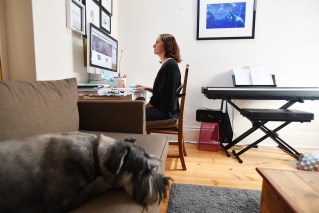Rise of casual and insecure work weighs on wages


Annual wages growth has stalled at 2.2 per cent. Photo: Getty
The outlook for wages was dealt another blow on Wednesday, with ABS figures revealing pay packets increased just 0.5 per cent over the three months to December 2019.
The meagre rise was in line with market expectations and means annual wages growth came in at 2.2 per cent – well below the historical average of 3-4 per cent.
Economists attributed the weak figures to the sizeable number of Australians who would like to work more hours than they are.
These casual and insecure workers account for 8.3 per cent of the workforce and are referred to as “underemployed”.
Understandably, many do not feel as though they are in the position to ask for a pay rise when they need more hours.
And so the nation’s high level of underemployment goes a long way towards explaining why wages are stuck in the doldrums despite a relatively low unemployment rate of 5.1 per cent.
Tweet from @CallamPickering
Taken together, underemployment and unemployment gives us the ‘underutilisation rate’, which paints a far clearer picture of today’s jobs market.
It sits at a seasonally adjusted 13.4 per cent.
Based on current trends, Indeed APAC economist Callam Pickering said the underutilisation rate would have to fall to 11.9 per cent for wages to once again grow at 3 per cent a year.
But this can only happen if the economy creates more full-time jobs – something that seems unlikely given recent data.
Although the jobless rate fell to 5.1 per cent in December, 300 full-time jobs were lost and 29,200 part-time jobs created to achieve that marginal improvement.
A few weeks later, ANZ reported that the number of job ads in January fell 11.8 per cent year on year – suggesting employment growth is unlikely to pick up any time soon.
And then came the bushfires and coronavirus outbreak.
Private-sector economists believe the fires alone will knock off 0.2 percentage points from GDP.
And ANZ is tipping the virus this quarter to drive GDP growth below zero for the first time since 2011.
All of that will weigh on jobs and growth and further delay a pick up in wages.
As will “low productivity growth, globalisation and technology displacing some jobs,” AMP Capital senior economist Diana Mousina said.
Tweet from @MichaelPascoe01
“This all suggests that more stimulus is necessary in Australia and we see the RBA cutting interest rates another two times (to 0.25 per cent) this year despite the optimistic outlook portrayed by the central bank in recent speeches and publications,” Ms Mousina said.
The ABS figures reveal the slowdown in wages has affected some industries worse than others.
Healthcare came top of the pile with 3.1 per cent annual wages growth.
The information media and telecommunication services industry languished at the bottom with 1.6 per cent annual growth.
And public sector wages grew at their slowest annual pace (2.2 per cent) since records began in 1997.
Tweet from @CallamPickering
“There are potentially some very early signs of the impact of the bushfires and more recently the coronavirus outbreak, with wages in the accommodation and food services sector increasing by just 0.2 per cent [over the quarter],” said Sarah Hunter, BIS Oxford Economics chief economist.
“It will be some time before we have a complete picture of the drag on the economy from these events, but it is likely that workers in the sector will feel some of the downturn via weaker employment and wages growth.”








